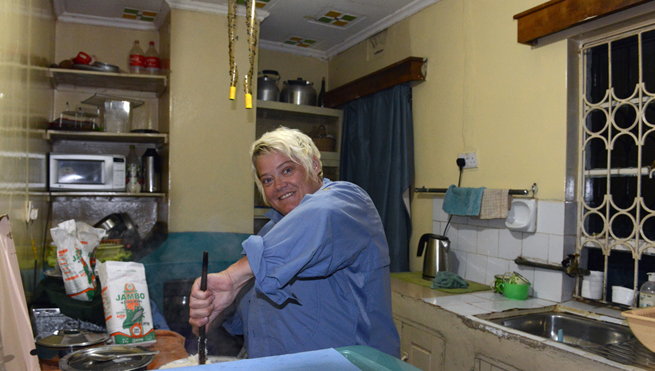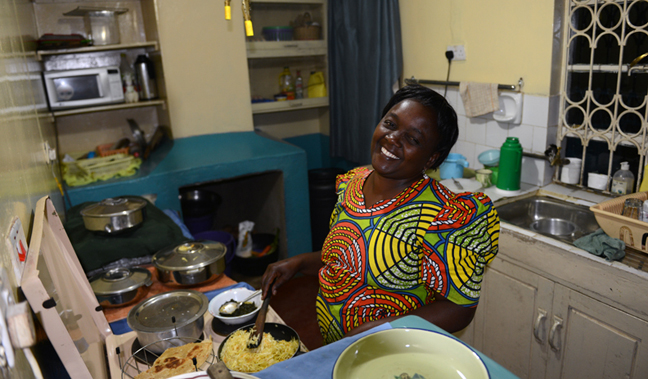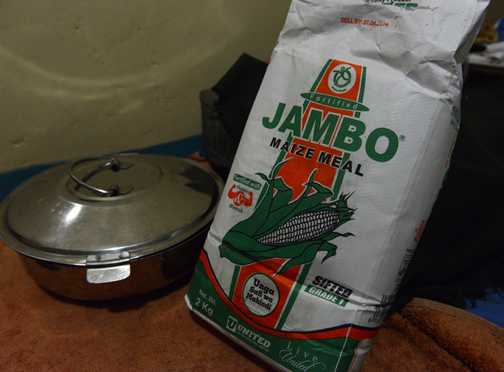
Unless you’ve eaten ugali, you have not eaten.
This, Lydia says, is what most Kenyans feel when it comes to their staple of maize flour cooked with boiling water into a thick cake.
Lydia teaching me:

Most times, that means a portion sliced into the size of a brick.
You cut off a hunk after it’s cooled, roll it a bit in your fingers so it’s held together well — think the consistency of gnocchi — and then dipped into vegetables or soup or sauce or anything else.
I best like it on “sukuma wiki,” a green leafy vegetable that I learned today is kale. Kale! I had no idea. It grows everywhere and is considered not so special because it is everywhere, and grown everywhere there’s water, including in towns.
It has a history, says Lydia, who is host to me these weeks: It is said that in towns people eat it right at the end of the week, before they got a salary. It got them through the week, until they could afford good vegetables or other protein, such as beef.
Sukuma wiki means “to push a week.”
Tonight, I learned that history and also how to make ugali with Lydia in her kitchen. Behind us, in her mother-in-law’s house, they still cook the traditional way, over fire. I will see that later this week.
I’m sure it’s easier to cook ugali this way: I did OK stirring, but man, it gets thick and heavy after some minutes simmering there with water!
My newfound knowledge:
HOW TO MAKE A GOOD UGALI
(which is important, because Lydia says that if it’s lumpy or not good, elders can refuse it. Tough crowd!
Fill a pot with water. Bring it to a boil
Pour in some maize flour (it’s easier if it’s the kind without ground-up husk) — this amount seems to be played by ear
Stir it and then stir it like dough until it is thick and has the consistency (I think) of heavy mashed potatoes and no watery stuff left
cover it and let it “cook” for about 5 minutes.
when you’ve cooled it and ready to eat, slice it. in the size of bricks!

